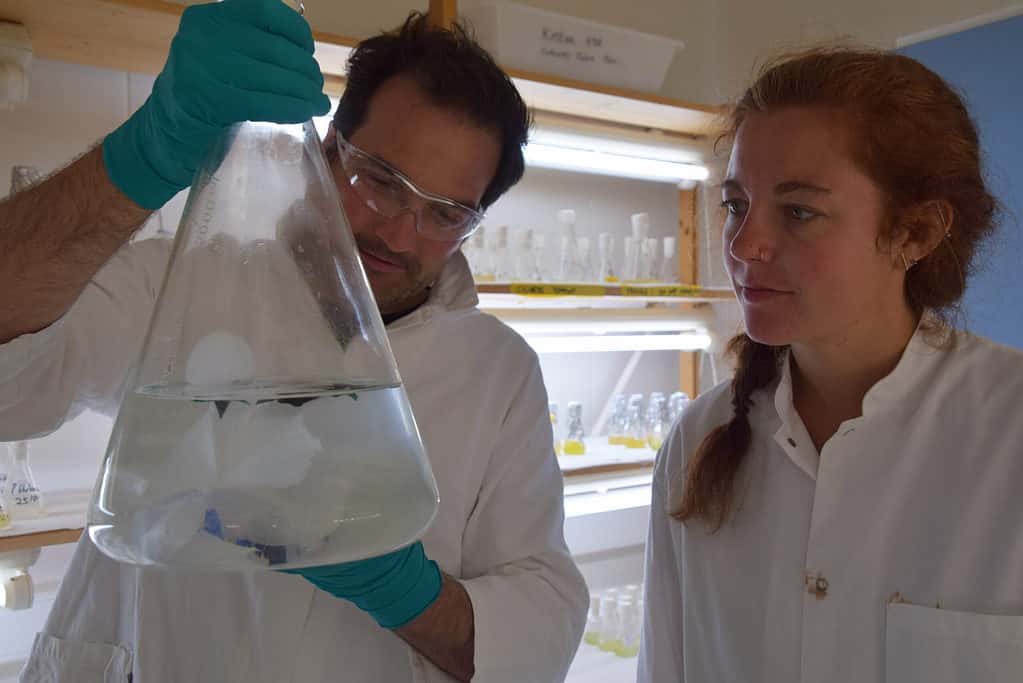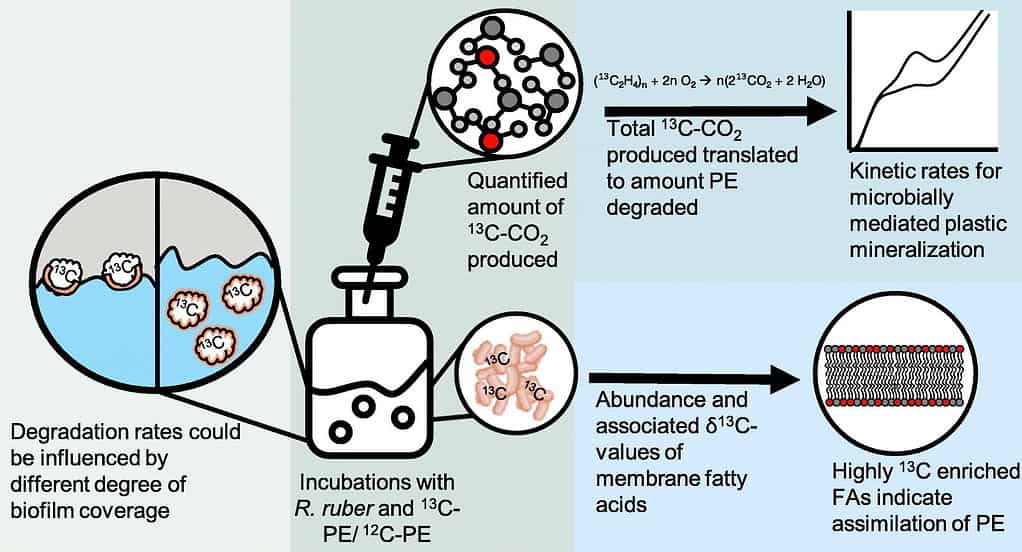Scientists have found a bacterium that can digest plastic, and probably is already doing exactly that in our oceans. The bacterium Rhodococcus ruber could be responsible for removing about 1% of the plastic in our oceans per year, transforming it into carbon dioxide. The figure could be even greater, researchers say — and this could be big news for our plastic pollution problem.

If you follow your share of science news, you probably came across exciting headlines over the years about plastic-eating microbes. From an enzyme that could break PTA, an ingredient in plastic bottles, to another enzyme that can eat plastic bottles six times faster. This gives the impression of a silver bullet to the plastic problem.
However, the reality is much more complex. Between 1.7% and 4.6 % of global plastic waste ends up in the ocean, resulting in a total accumulation of 117 to 320 million tons of plastic in the marine environment between 1950 and 2015. Most of the plastic in the ocean comes from land. It flows through rivers and eventually reaches the sea — simply put, there’s a lot of plastic around, and it’s growing more and more with each passing year. But there’s also some missing plastic, researchers say, and this bacterium could have something to do with it.
“[Our] experiments are mainly a proof of principle. I see it as one piece of the jigsaw, in the issue of where all the plastic that disappears into the oceans stays. If you try to trace all our waste, a lot of plastic is lost. Digestion by bacteria could possibly provide part of the explanation,” Maaike Goudriaan, study lead author, said in a statement.
A plastic-eating bacterium
Goudriaan and colleagues carried out a laboratory experiment with the Rhodococcus ruber. They first fed it polyethylene they had marked with isotopes of slightly heavier carbon atoms called carbon-13. Before throwing it to the bacterium, the researchers treated the plastic with UV light as the sunlight partially breaks down plastic into small-sized pieces.

Then, they mixed the plastic with the bacteria and simulated seawater in a bottle. They identified the carbon-13 atoms above the water in carbon dioxide molecules. This means that the Rhodococcus ruber was digesting the plastic and converting it into energy and CO2. This is the first time a study showed that bacteria can digest plastic and turn it into CO2, they said.
The researchers could also estimate the total amount of plastic the bacterium was converting – about 1.2% of the plastic in our oceans per year. However, this is probably an underestimate, Goudriaan said. “We only measured the amount of carbon-13 in CO2, so not in the other breakdown products of the plastic,” he added.
While excited about their finding, the researchers said that microbial digestion isn’t a solution to the big problem of all the plastic in the oceans. They now want to discover whether “wild” bacteria can eat plastic “in the wild” and for this are doing experiments with real sea water and some sediments they collected from the Wadden Sea floor.
“The first results of these experiments hint at plastic being degraded, even in nature,” Goudriaan said. “A new Ph.D. student will have to continue that work. Ultimately, of course, you hope to calculate how much plastic in the oceans really is degraded by bacteria. But much better than cleaning up, is prevention. And only we humans can do that.”
The study was published in the journal Marine Pollution Bulletin.









